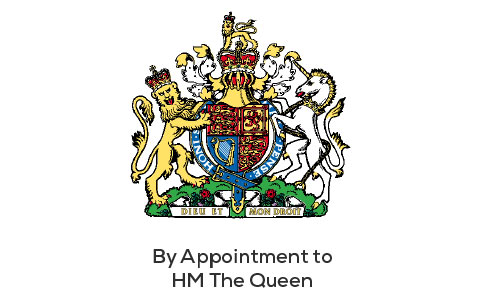B2B Social Media Marketing: top-10-mistakes and how to fix them


On World Social Media Day, June 30th, will you celebrating the replacement of the fax machine with Facebook, or wishing you could summon up the willpower to withstand the urge to WhatsApp for an hour or two? For businesses big and small, B2B social media gives everyone the opportunity to be on an equal playing field. That’s the theory anyway. In reality, for smaller businesses or start-ups, this isn’t always the case because the passion SMEs possess isn’t necessarily matched by their understanding of how to get the best out of social. And, how to do it cost-effectively.
So, to help less tech and socially savvy businesses up their game, we’ve taken the time to consult with some of our small business clients and find out what they fear most about B2B social media marketing. And, from our in-depth research, we’ve complied a list of the ten mistakes most frequently made, with tips on how to resolve each issue.

#1 Don’t expect instant success
Just as Pinterest isn’t Pot Noodle, you can’t build instant success on social media channels overnight. In fact, we all know the expression, ‘Rome wasn’t built in a day’, it supposedly took in 1,229 years and many rightly assert that it still isn’t finished! The good news then is that you can build a successful social presence in a lot less time than it took to build Rome.
Manage your expectations on social. Unless you have something extra-special to communicate, it’s likely that you’ll spend your first days or weeks, posting content and achieving very little response. Don’t despair. It will happen, but it takes longer that you may think – or been led to believe if you read the ‘how to get 100,000 followers in one month’ promotions that some claim, but you have to buy their secret sauce recipe first.
B2B or SME social marketing does take time. It takes a lot of patience and perseverance and eventually it will pay dividends if you do it properly. Our tip would be to set yourself realistic expectations first and look at the longer term to measure your success.
#2 Focusing on the Holy Grail – more followers
Many small businesses or organisations new to social believe business success is directly proportional to their social following. Of course, having a decent following can be great for getting more business, however, that isn’t necessarily the case.
Despite social channels employing increasingly sophisticated techniques to prevent fake or transient followers, it’s still possible to buy yourself a following by employing third-party agencies a fee for getting fake likes, fake reviews or more fake followers.
Social channel rely heavily on account engagement (likes, comments, shares, clicks etc.). They use complex, unpublished algorithms to prioritise what content should appear in your feed. For example, if you can achieve significant engagement with a new post within the first hour, your content is served to more people – giving you a better chance of reaching an even bigger audience.
Fake accounts can’t engage with posts, which in turn hurts your engagement ratio and prevents you from reaching more people. That’s why building a healthy following is better than building a big following.
#3 Post what customers want to hear
Too many times we’ve seen B2B social media campaigns geared around what the CEO wants to say or social posts based around communicating what message the company wishes to push onto customers. We say ‘focus on what customers want to hear rather than what you want to say’.
This may seem strange, after all it’s your social account so you decide what your message is. The truth is that customers have the final say and it’s better to communicate about what they want to know, to learn or to have, than listen to the corporate line being rolled out on every occasion.
Think customer first. Your own needs second. That’s the golden rule for social.
#4 Too much or too little attention to B2B social
For smaller or local businesses in particular, social channels such as Facebook can be a life saver. There are many successful small businesses who tap into Facebook Market Place, post offers regularly, answer questions and interact directly with their clients using Facebook as their primary tool.
This can work really well for some businesses, yet you can become consumed in concentrating on social above serving clients or running the business, if you are a small or start-up business without the personnel to manage social accounts like Facebook. It can also affect your mental health or relationships if you’re spending many hours answering messages or working extended hours on your social accounts.
The opposite of this is organisations who ignore social or think it is not for them. Initially many of the service industries such as private medicine, accountancy and solicitors avoided social fever. Now they’ve begun to embrace it. From reviewing more than 100 different social accounts for professional services in 2021, we’ve observed that many of the organisations simply have an account for the sake of doing so, missing out on repeated opportunities to build engagement with prospective clients.
Our advice is that you need to get the balance right. Invest an appropriate level of time you can afford in social. If you can’t invest the time or don’t have the heart to make it a success, either hand your account over to an agency who will make it work for you, or don’t set up an account in the first place. That’s sage advice, based on speaking to many organisations who are still trying to get the balance right.
#5 Uncreative
Things get noticed when they are interesting, relevant, different and visually pleasing. On the flip side of this, you can also get too clever with your creativity, which can have an equally adverse effect on your social marketing.
Matching the headline to the visual is the key to create interest and pique engagement. If you’re a bigger business and have the capacity and budget to run multiple teaser campaigns, this can be an effective way of ensuring that people are wondering what your post is all about, so when you hit the ‘launch’ time, your campaign gets noticed. This works wonders for Apple, however, if your customers don’t lie awake at night wondering what marvellous products or services you’re bringing out next, try to avoid copying the same strategies as ‘must have’ brands use.
To improve your creativity, try creating your content well in advance, where possible, revisiting the idea a few days later to check if your initial ideas were strong enough. If so, go for it and post.
#6 Don't be afraid of feedback
Are you too over-protective about receiving negative feedback or getting negative comments on Facebook, Instagram, LinkedIn, YouTube or Twitter? Don’t be. There are some very good businesses out there which thrive on managing negative feedback and replying in an open and honest manner, showcasing how they are considerate, understanding and how seriously they take customer feedback.
Embrace it, welcome it but above all, handle it in a genuine way. After all, making unhappy customers happy again, gets you more loyalty than having dissatisfied clients who don’t complain at all.
#7 Try to avoid being too self-promoting
Building a solid B2B social media strategy is dependent on achieving the best balance of engagement, promotion and having a call to action. It’s true that in the short term, pretty pictures aren’t going to get you the results you hoped for, if they help build brand engagement then your promotional messages are more likely to have maximum impact.
What this means is that you campaign needs to be balanced, promoting engaging or interesting content regularly, rather than relying on constant offers, promotions or sales messages.
#8 Planning
Everything starts with planning where it comes to social. Everything. The best way to start is to determine what you want to achieve from social and, how you are going to approach achieving your goals. Once that’s sorted you need to have a clear and detailed idea of exactly what your going to do, where to do it and how precisely this will be executed. Simple hey? Not really.
If you’re a seasoned B2B social campaigner, this will be second nature to you. If you’re like most other organisations new to social, it can be quite a daunting challenge.
Once you’ve got the planning out of the way, you need to have a short-medium term content plan, mapping out what you want to post, and when. Of course, there will be times you may want to shoehorn in extra content, like for example if there’s something relevant in the news associated with what you do, or if you’ve won awards or reached important milestones.
Your plan should include channel specific goals, such as what to post on LinkedIn, YouTube, Facebook, Instagram or Twitter. And, we haven’t touched on paid advertising here, but if you have the funds to support a campaign, your paid social should be overlaid with your plans for blogging and organic social posts. As we said at the start of this section, with social, planning is everything.
#9 Different Channels. Different audience. Different message
‘All for one but not one for all’ should be your motto for social. What we mean by that is every channel has a different ecosystem. YouTube for example is completely different to Twitter. LinkedIn different to Facebook and Instagram different to Pinterest, and so on.
Once you’ve identified which channels work best for you, you need to determine how your approach and communications will be managed on each channel. Your LinkedIn channel may focus on building relationships, contacts or attracting prospective employees. Conversely your Instagram channel may focus on products, projects or services. When you think about it like this, you should invest sufficient time to think about developing channel-specific posts, rather than simply posting one post across all channels.
#10 Poor content quality
How many times have you thought, “We need to do more social. Just get something out there fast.” Often the result is a half-baked idea, executed in a rush, without much thought. When that fails to deliver results, you do the same again, frenetically running about like a headless chicken wondering why ‘social doesn’t work’. It does work, however in order to get engagement with your target audience, the content or subject matter needs to be strong, interesting and have impact.
Taking time to work out why you’re posting and what you want to post about is more important than posting itself. Try to avoid using poor quality photos or graphics and make sure your headline grabs attention, when accompanied by good visuals.
Summing up
Wouldn’t life be much easier if you could read an article about B2B social media marketing like this and your social strategy would be fixed? In the real world, it takes a lot of effort to achieve social media success. Hopefully, if you’re new to social media marketing, this gives you some food for thought.
If you want to find out how thinktank can help you make your B2B social media marketing better, call thinktank on 0161 826 0106 today.












